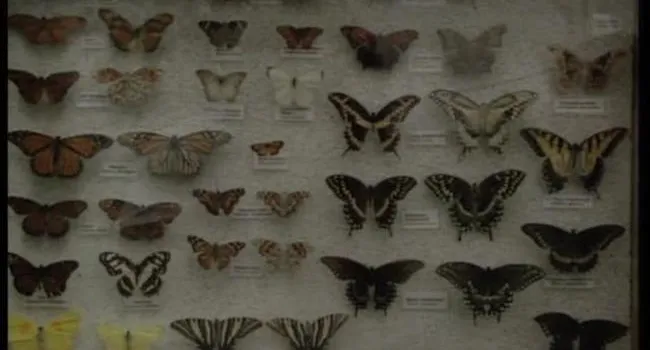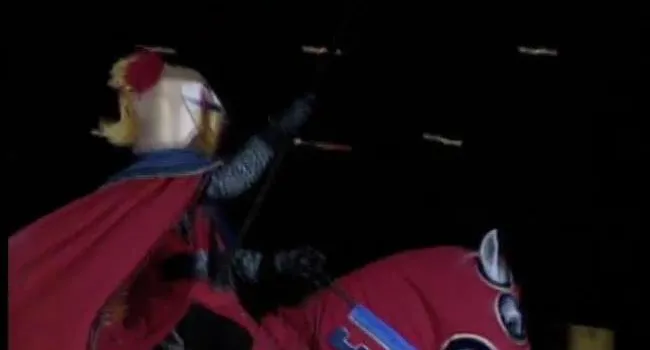Food preparation for the many animals at the aquarium takes time. The songbirds eat different foods than the predatory birds. Some of the foods eaten by the birds include apples, peas, meal, carrots, fish, eggs, bananas, oranges, seeds, grains, corn, blueberries, flamingo fare (crab and fish), mealworms, wax worms, vitamins, and grapes. Most of the small birds eat once a day, but the larger birds, such as the great blue heron, eat twice a day. The birds in the aquarium exhibits come from rehabilitation facilities or other zoos. They are not considered releasable because they have incurred injuries or they have been born in captivity.
Reptiles are another feature of the aquarium exhibits. Snakes, lizards, crocodilian, and some amphibians are taken care of by herpetologists. The sources of the reptiles and amphibians are zoos and breeding programs. The staff uses gloves, a snake hook, and snake tongs to handle snakes. The exhibits at the aquarium are community exhibits. All snakes are carnivores. They eat rats, snails, and fish. Turtles are omnivores, which means they eat plants and animals. Their diets consist mostly of shrimp, mollusks, and fish.
Feeding and training animals is a job done by an animal behaviorist. Two river otters, Ashley and Edisto, are residents of the aquarium and are not considered releasable. Although they are trained wild animals, they are not pets. They go to stations or shift on command. The river otters like to play and need an environment with lots of stimulation. Enrichment items are toys and things that smell and get the otters’ attention. The exhibit in which the otters are displayed is modeled after a mountain stream. They eat clams, fish, carrots, fruit, vegetables, and small mammals.
Standards
- 3.2.2.ER Identify and analyze the ways people interact with the physical environment in different regions of the state, the country, and the world.
- Life Science: Environments and Habitats
- 3.L.5 The student will demonstrate an understanding of how the characteristics and changes in environments and habitats affect the diversity of organisms.
- 3.L.5A The characteristics of an environment (including physical characteristics, temperature, availability of resources, or the kinds and numbers of organisms present) influence the diversity of organisms that live there. Organisms can survive only in...
- 3.L.5B When the environment or habitat changes, some plants and animals survive and reproduce, some move to new locations, and some die. Fossils can be used to infer characteristics of environments from long ago.
- 3.L.5 The student will demonstrate an understanding of how the characteristics and changes in environments and habitats affect the diversity of organisms.
- Earth Science: Changes in Landforms and Oceans
- 5.E.3 The student will demonstrate an understanding of how natural processes and human activities affect the features of Earth’s landforms and oceans.
- 5.E.3A Some of the land on Earth is located above water and some is located below the oceans. The downhill movement of water as it flows to the ocean shapes the appearance of the land. There are patterns in the location and structure of landforms found...
- 5.E.3B Earth’s oceans and landforms can be affected by natural processes in various ways. Humans cannot eliminate natural hazards caused by these processes but can take steps to reduce their impacts. Human activities can affect the land and ocean...
- 5.E.3B.2 Develop and use models to explain the effect of the movement of ocean water (including waves, currents, and tides) on the ocean shore zone (including beaches, barrier islands, estuaries, and inlets).
- 5.E.3B.3 Construct scientific arguments to support claims that human activities (such as conservation efforts or pollution) affect the land and oceans of Earth.
- 5.E.3 The student will demonstrate an understanding of how natural processes and human activities affect the features of Earth’s landforms and oceans.
- Ecology: Interactions of Living Systems and the Environment
- 7.EC.5 The student will demonstrate an understanding of how organisms interact with and respond to the biotic and abiotic components of their environments.
- 7.EC.5A In all ecosystems, organisms and populations of organisms depend on their environmental interactions with other living things (biotic factors) and with physical (abiotic) factors (such as light, temperature, water, or soil quality). Disruptions...
- 7.EC.5A.1 Develop and use models to describe the characteristics of the levels of organization within ecosystems (including species, populations, communities, ecosystems, and biomes).
- 7.EC.5A.3 Analyze and interpret data to predict changes in the number of organisms within a population when certain changes occur to the physical environment (such as changes due to natural hazards or limiting factors).
- 7.EC.5B Organisms in all ecosystems interact with and depend up on each other. Organisms with similar needs compete for limited resources. Food webs and energy pyramids are models that demonstrate how energy is transferred within an ecosystem.
- 7.EC.5B.3 Analyze and interpret data to predict how changes in the number of organisms of one species affects the balance of an ecosystem.
- 7.EC.5B.4 Define problems caused by the introduction of a new species in an environment and design devices or solutions to minimize the impact(s) to the balance of an ecosystem.
- 7.EC.5A In all ecosystems, organisms and populations of organisms depend on their environmental interactions with other living things (biotic factors) and with physical (abiotic) factors (such as light, temperature, water, or soil quality). Disruptions...
- 7.EC.5 The student will demonstrate an understanding of how organisms interact with and respond to the biotic and abiotic components of their environments.



































